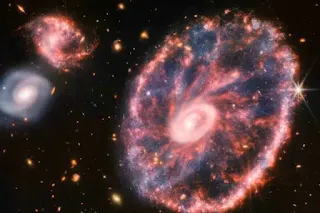NASA's James Webb Space Telescope has captured new details about Jupiter's aurora, revealing that the planet's atmospheric light phenomenon is much more dynamic and powerful than previously thought, NASA said .
Observations made with the Webb telescope's Near-Infrared Camera (NIRCam) on December 25, 2023 and analyzed by a team of scientists led by Jonathan Nichols of the University of Leicester in the UK, show auroras on Jupiter that are hundreds of times brighter and more energetic than those on Earth.
Auroras occur when charged particles with high energy enter a planet's atmosphere near its magnetic poles and collide with atmospheric gases, creating a beautiful light "show."
The aurora on Earth, commonly known as the Northern and Southern Lights, are fueled by solar storms, while the aurora on Jupiter have an additional energy source, the volcanically active moon Io.
The Webb telescope's unique capabilities have provided new insights into Jupiter's auroras. The telescope's sensitivity allows astronomers to capture rapidly changing auroral features, according to NASA.





